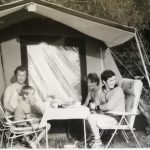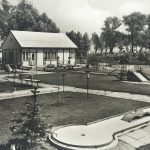Do you have more photos from your youth or from your parents? If the campsite is recognisable on these, we would be very happy to receive more pictures. We would also be very interested in further information about the history.
Were you with us back then? Tell us about it!
Here you can find out what has changed or just come and book your place. We would be very happy about that.





















